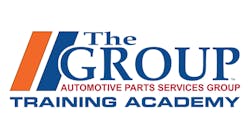Ratchet+Wrench sat down with Tom Rayk, Director of Training at AVI, to discuss the importance of ADAS and calibration training for shops motivated to stay ahead.
Why is having knowledge on ADAS important?
All newer vehicles are getting to the point where they will be able to drive themselves. And we're working the electronics right now to get us to that point—we're not quite there yet. So that means manufacturers are installing new components like radar systems, and LIDAR systems with cameras in order to direct the vehicle.
All of this new technology is going to require calibrations of those cameras. We need to make sure the cameras are aligned correctly so they can see the lines on the street and that the radar and LIDAR systems have the ability to tell how far away objects are. And in order to do that, they need to be properly calibrated.
Some owners argue that they don’t need to have knowledge on calibrations this early on, what do you say to them?
It's been years now that these systems have been in vehicles, some actually started as add-ons to anti-lock braking systems as far as traction control, and such. The same type of systems have been around for quite a while. And even when you do an alignment on a lot of newer vehicles, you do have to go ahead and actually do things like calibrate the Steering Angle Sensors.
Could you explain the difference between static and dynamic ADAS calibration?
Basically, dynamic means you can use a scan tool by putting the vehicle into calibration mode, and then driving it in a certain way. The vehicle will then calibrate itself when given the command by the scan tool. Although it's not as easy as it sounds, because you have to follow certain driving practices to get it to learn correctly.
Static is a little different because, very simply, there are targets. There’s tools and equipment that are used to calibrate those sensors that have to be put on a level surface with lasers that direct where targets need to be. The cameras inside get a look at the target and then calibrate themselves to that target. It's very critical that whoever does the static calibration really knows what they are doing because particular calibrations can vary from one vehicle to another.
What type of ADAS calibration training should owners be looking at for their staff?
We have ADAS training available that covers everything from what makes the systems work, to where the components are located, to what kind of problems could come up. The training goes into both dynamic and static calibrations and, of course, the actual targets and equipment used to do the calibrations. So we have that readily available in many forms.
Some of our training is 24/7 and on-demand. And then we also have what we call our coaching program, which is for a small group of 20 or so employees via the internet. The program is through a two-way conversation showcasing how the systems work and how to perform actual calibrations. This type of training is rather helpful during COVID or other issues that require bringing training to a shop virtually. And then of course, have mobile training classes with a mobile calibration rack and portable equipment.
How often do you recommend shops invest in ADAS training?
As we all know, technology changes so rapidly right now. If we look at the last four or five years, there have been far more changes because the technology continues to improve every single month. The thought is that we should see every technician with about 40 hours of training each year on topics that the shop deals with. So, it's definitely an ongoing training situation with all the new technology.
You can visit The Group Training Academy at thegrouptrainingacademy.com or learn more by calling 1.800.718.7246.



